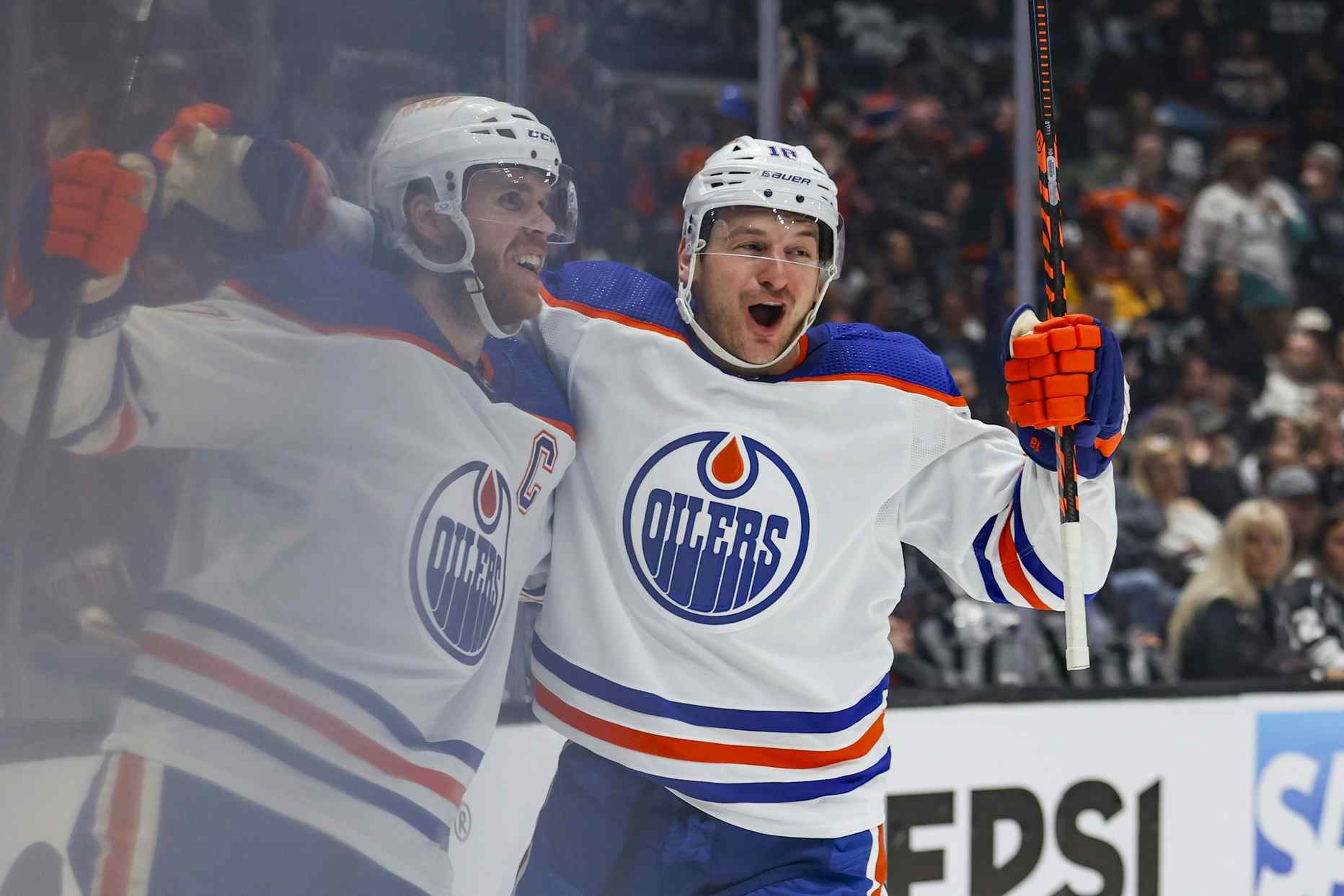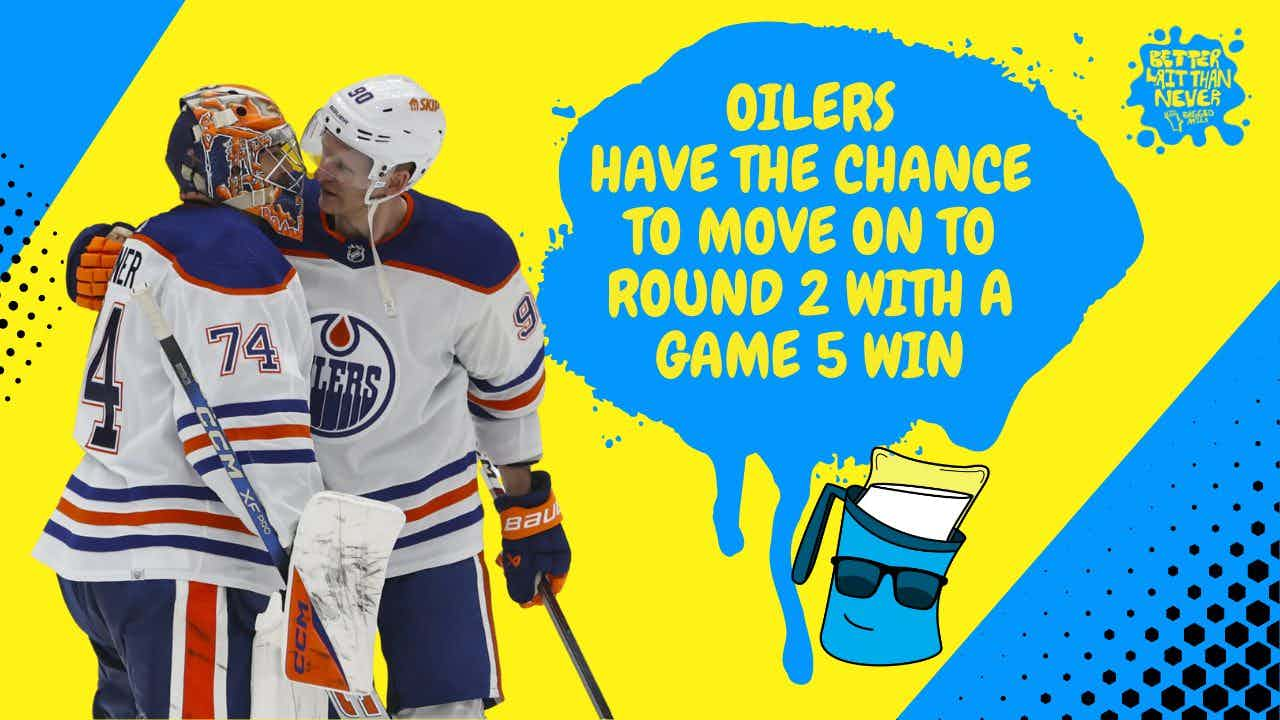A Red Journal Salvaged Slater Koekkoek’s Career

By Jason Gregor
3 years agoLast December, @Slater Koekkoek’s NHL career was heading in the wrong direction. He’d been a healthy scratch for 28 of Chicago’s first 44 games. Seven years earlier (2012) he was drafted 10th overall by Tampa Bay. There were high expectations and being a regular healthy scratch for the struggling Chicago Blackhawks wasn’t the story he, or many in hockey, predicted.
The path to NHL success is rarely quick, smooth or easy. After five seasons with the perennial Stanley Cup contending Tampa Bay Lightning, where cracking the lineup was much more difficult than playing on the 25th place Blackhawks, Koekkoek didn’t expect to be in the pressbox more than on the ice.
But that was his reality. He was on the brink of being out of the NHL. His confidence was minimal and it was a challenge to find positives when he went home to his apartment.
Then in late December his agent, Ritch Winter, called him and they had a very honest conversation about where Koekkoek’s career was heading. Winter spoke candidly, and said If Koekkoek wanted to get back in the lineup something had to change and Winter offered an “outside-the-box” option.
He recommended Koekkoek start a journal. A short while later Koekkoek sent Winter a text with a picture and the words, “Got one in team colours. Looks great.”
That red journal changed Koekkoek’s thinking, and it might have saved his NHL career.
“It did,” said Koekkoek over the phone after signing with the Oilers earlier this week. “I was in a rut, even last year, early on the season. You get going through the motions when you aren’t in the lineup and it is tough to see a light or get that energy to be positive.”
I asked Winter why he recommended the journal.
“Journaling is an effective tool to reset a player’s focus,” said Winter. “When things are not going well, journaling helps put a player’s current circumstances in perspective, taking their focus away from the stress caused by playing in a lesser role than expected or being pulled out of the lineup.
“When players are playing well, they seldom give much thought to their game. When they slump they tend to focus on their game 24/7 which pushes them further into a state where they are not as mentally sharp as they need to be to play at the NHL level. Journaling, visualization, goal setting and meditation, when combined as part of a mental acuity development plan, are effective tools we help players to understand and implement because it’s the fastest way for them to return to playing at the highest level of which they are capable.
“The physical aspect of hockey is no longer much of a differentiator. Virtually every NHL player is in top physical condition. A journaling strategy that broadens a player’s perspective beyond current circumstances and causes them to focus on the great blessings they enjoy away from the rink, takes them away from focusing on the stress caused by their current poor performance or lack of opportunity.
“It is an instantly effective strategy based on long established science. Strangely, focusing on being a better father, husband or friend, and attending to that between games and practices leads to better performance way more quickly than dwelling on the poor performance that otherwise are hard to ignore. It’s a fast acting form of medicine for hockey slumps because it reduces anxiety, improves confidence and creates a lesser degree of urgency in their play — all integral ingredients in elite play.”
Koekkoek’s journal wasn’t just about the NHL, but also about his life.
“I encouraged Slater to not only write out his goals for hockey, but also challenged him to write down what he was doing away from the rink. And then he had to send me updates on what he was doing,” said Winter.
To Koekkoek’s credit, he listened and started his journal last December.
“I wrote top-six on the top of one of my pages,” said Koekkoek in regards to his main NHL goal. “This is where I want to be, whether that is next week or at the end of the season.
“Whenever you aren’t playing or things aren’t going your way you kind of isolate or stick to yourself. One thing Ritch had me do was write down any fun activities I was doing outside the rink. Just to make sure I was keeping up with hanging out with friends or hanging out with teammates, going for dinner with teammates. It doesn’t let you get down or isolated in your own little world. That was a big part as well. It helped me mentally.”
SHARING WITH HIS COACHES….

Feb 27, 2020; Tampa, Florida, USA; Chicago Blackhawks defenseman Slater Koekkoek (68) is congratulated as he scores a goal against the Tampa Bay Lightning during the third period at Amalie Arena. Mandatory Credit: Kim Klement-USA TODAY Sports
Writing down his goal of being in the top-six regularly was the first step, but then Koekkoek really had to step outside his comfort zone and take his journal to his coaches. Winter encouraged him to show the coaches and get their input.
“I took that journal to our D coach (Sheldon Brookbank),” Koekkoek explained. “I said, ‘Look this is what I want, this is where I am — how do I get to where I want? We sat down and I spoke with him and Jeremy Colliton (head coach). And then one thing led to another, whether it was an injury that gave me an opportunity, or whatever, but I felt like I was so ready for the opportunity and I really ran with it when I got it.”
Not only did he show the coaches his goals, he asked them what they liked about his game. On one page of his journal he read his goal of TOP-SIX, and on the subsequent page he listed the positives of his play. He read those words regularly, and he worked on sharpening those skills in practice.
You don’t make the NHL without skill. Often players, and even coaches, focus too much on what the player isn’t doing well, rather than all the things they do well. Reading what the coaches liked about his game re-instilled his self-belief. And it likely helped because the coaches were now watching for the things he did well. Opening up a dialogue with them automatically puts him in their thoughts more.
It wasn’t instant success. Koekkoek played December 27th and 29th, but then sat out the next four games. Undeterred, he kept working hard in practice, but away from the rink he wasn’t focused solely on hockey. Winter’s advice to spend time with friends or teammates was working.
Koekkoek and some teammates went to a boat show one day. Then they had big steak dinner. He didn’t spend time thinking about not playing. He was happier. Another day he went hat shopping. And later on walked into the rink looking very Chicago-like.

After Koekkoek posted this photo a former teammate of his texted Winter to say how different Koekkoek was. He looked and sounded more confident and happy.
He returned to the lineup January 9th, and didn’t spend another moment in the press box. He played the final 26 games.
In the Hawks first 44 games, Koekkoek only played 16 games and averaged 15:25/game. He produced 0-3-3 and was -4 at 5×5. He played the fewest games and had the lowest TOI/game.
But in the Hawks final 26 games he produced 1-6-7, led all D-men with a +7 at 5×5 and played 17:35/game.
How did journaling help him?
“The journal allowed me to align my goals and helped my mind to see that path,” said Koekkoek.”It also opened a line of dialogue with the coaches and a more positive mindset for me. But just playing helps. Whenever you are in the lineup a couple nights in a row and build some confidence I think that dictates your on-ice success. But getting your mind in the right position definitely matters. Having confidence on the ice makes such a big difference.”
Koekkoek has continued to write in his journal. His goals have changed, but he is keeping them private. Last season, when he first brought his journal into the dressing room his teammates messed with him in typical locker room banter, but he never divulged what he was writing. It was only for him. He shared last seasons’ goals now, because that time has passed, but this season, on a new team, he has new goals.
Once he signed he spoke with Oilers defence coach Jim Playfair.
“Jim and I have had discussions already, and I thought they went well. I look forward to building a relationship with him and working with him,” Koekkoek said. He expected they would have more in-depth conversations during training camp and in the regular season.
Koekkoek was quick to add this regarding his journal.
“It worked for me,” he said. “But I don’t promise anyone results. I think just getting clear on your goals, visualizing those positive things happening to you really gives you some confidence whenever you need it.”
Combine the final 26 regular season games, and then nine in the playoffs, where he and partner Olli Maatta had very good success, Koekkoek comes to Edmonton with a renewed confidence and a belief he can be a regular NHLer.
An outside-the-box thought led him to writing inside the lines of a page and ultimately salvaging his NHL career.
PARTING SHOTS….

Entering his seventh pro season, we discussed what areas of his game he feels he’s improved the most since debuting in the NHL on March 31st, 2015.
“One area for sure, is reigning in always pressing,” he answered. “Jon Cooper in Tampa said, ‘Sometimes you just have to punt it.’ It’s true. You can’t always be pressing. You have to play D-zone, and you have to take care of it no matter how long it takes. You are going to get hemmed in sometimes and you can’t cheat to get out of the zone. It is more about keeping positioning and taking pride in that D-zone, and if you spend the entire shift in the D zone, that is fine, you will get them next time.”
He is confident he will be able to adjust quickly to a new team and a new system.
“I was actually just watching a video package the Oilers sent me with some different systems in it. And we studied Edmonton for a couple weeks before we played them in the qualifying series. It is not foreign to me at all. It will be important for us to have some good practices before the season starts to get the systems locked in and get a comfortable feel for our new teammates and where they are going to be on the ice. That is a big thing as well.”
Does he see any advantage offensively or defensively with no preseason games?
“That is a great question. Honestly, I don’t know. It will depend on many factors. Are teams going to be run and gun off the start? Will teams be hesitant? Are teams going to sit back and be cautious? I honestly have no idea which makes it interesting.
Why did he sign with Edmonton?
“Playing in the Canadian division was attractive to me. Being from Ottawa I like the Canadian winter. Any time I’ve been to Edmonton I enjoyed it, and my sister (Madison, who works for Hockey Canada) lives in Calgary so she isn’t too far from me, and I was really excited about the team.
“I got to see them for four games in the playoffs, and obviously the two big stars, McDavid and Draisaitl, stick out in your mind and are very exciting players and I can’t wait to work with them. But they also have some other young players who are exciting and I think it is a good fit and opportunity for me.
Recently by Jason Gregor:
Recent articles from Jason Gregor





